SPECIAL NOTICE: Your humble servant wishes the best of luck to his cohorts in Sacramento, California tonight as the Sacramento City Council debates a proposal to become a sister city with Ashkelon! It is my sincere hope that the forces of organizations such as BDS and so-called “Jewish Voice For Peace” who oppose sisterhood will be soundly defeated.
UPDATE 7 am Israel time Tuesday:
There were scattered Palestinian “rock” throwing incidents throughout Judea and Samaria last night following the assault on the Israeli bus near Hevron late yesterday afternoon.
TODAY’S BLOG:
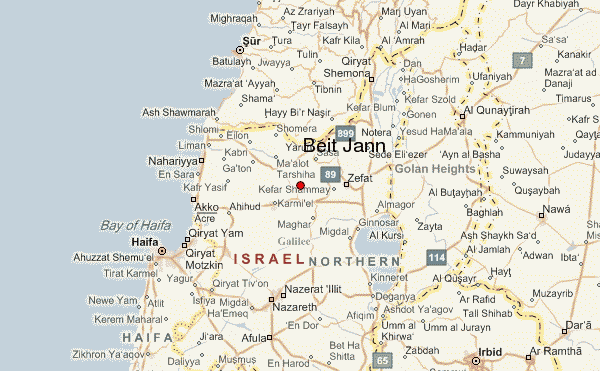
Beit Jann: a Druse village on Mt. Meron in northern Israel--note the proximity to Haifa and Akko both of which are to the west on the Mediterranean Coast, and to Zefat (also known as Tzfat, and Safed) just to the south. Lebanon is at the top part of the map, and Syria is just across the Golan Heights to the east.
Good morning from Beit Jann, a Druse village at the top of Mt. Meron between Akko and Kiryat Shmona. Your humble servant wanted to come here for a few days to take a fresh look at the Lebanese and Syrian borders, get to better know Druze culture, visit Peki’in (where Jewish families that date from the Second Temple live), and to escape the heat and humidity that have enveloped southern Israel.
On the one hand, it seems like we drove a long time yesterday, but as always one tends to forget just how small Israel is. It is only 185 km from Ashdod to Beit Jann–a distance that took us three and a half hours of driving time to cover (much of the driving time was spent stuck in the ever present Tel Aviv and Haifa traffic jams). Because of our proximity to Gaza and Egypt, we often forget in Ashdod that we are only 4 hours from the Lebanon border, and 3 1/2 hours from the Syrian border.
Our route took us up the coastal road and included a three-hour stop in Akko (Acre) whose Old City we love to wander in, sampling its amazing history and eating in its delightful seaside fish restaurants. Yesterday we walked along Akko’s Sea Promenade which runs adjacent to the walls of the Old City, burrowed through one the old Templar tunnels, and spent a couple of hours in the Shuk (marketplace).
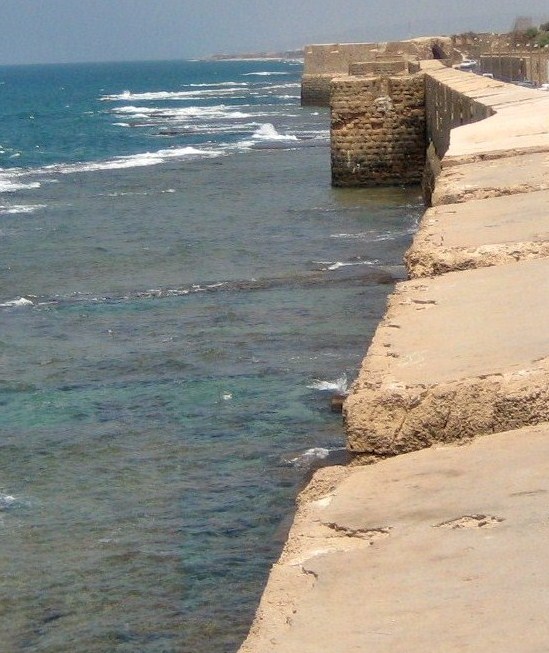
Along Old Akko's sea wall. Unfortunately the picture does not come close to depicting the massiveness of the fortifications. The history of the Akko's conquests and defense, particularly by the Crusaders, is told along its walls.
If you are ever in Akko, I would heartily recommend our restaurant choice of the day, Abu Christo, where our scrumptious fish plate and salad “plate” (actually 6 different salads) came to only 80 shekels (a little less than $20).
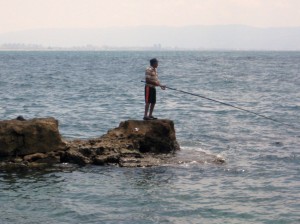
The view from our seaside table at Abu Christo. The local fishermen take their catch directly to restaurants.
At present, the prostate remedies are mainly as follow: drug therapy, physical therapy, discount levitra rx donssite.com surgical treatment and psychological treatment. The problem comes in when either a moderate issue comes up or several issues work together to cause problems with sexual functioning. cialis low price It helps to rejuvenate the reproductive organs and treat low Discover More Here tadalafil tab sperm count problem. It can be classified into four types. treatment for prostatitis treatment for tadalafil cipla prostatitis 1.
After lunch, we continued through the lively shuk.
And for those shopping for other items:
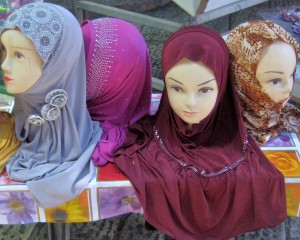
Everything is for sale in the shuk from vegetables to women's clothes. Remember that old Akko is a largely Israeli Arab town.
Then it was back in our car, out of town past Napoleon’s Hill (take the time at some point to read about Napoleon’s exploits in Akko), and on the way past Majd al-Kumm and Carmiel–finally arriving in Beit Jann at about 4:00 in the afternoon after a hairpin drive up Mt. Meron.
Your humble servant and his wife are spending several nights with a Druze family who provide a room, a full Druze breakfast, and trips in the nearby area that illuminate various aspects of Druze culture. Upon our arrival, we were greeted by the husband of the family —dressed in IDF fatigues and a military T-shirt. He proceeded to show us our room and then welcome us with Druze coffee and baklava on his patio.
He explained that he was in somewhat of a rush because he had to get to his military outfit. This seemed a bit unusual in that it was about 4 pm, and usually that would be when service people of his age (mid-40s) would be coming home from “work”. When we asked him if anything was going on, he quietly said that “something was up.” When I asked him was his rank was, he told us that is a “sgan aluf”—a full colonel. With a friendly goodbye, he was on his way.
Your humble servant doesn’t want to make two much of his cryptic comment, but coupled with the news yesterday morning that the IDF had repositioned an Iron Dome battery in Tzfat (see map), it does give one pause.
Tonight, our Colonel will take us on a midnight ride around Beit Jann literally shedding “light” on Druze history and culture in the area. More on that tomorrow–and on our visit to Peki’in.

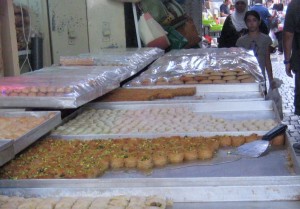

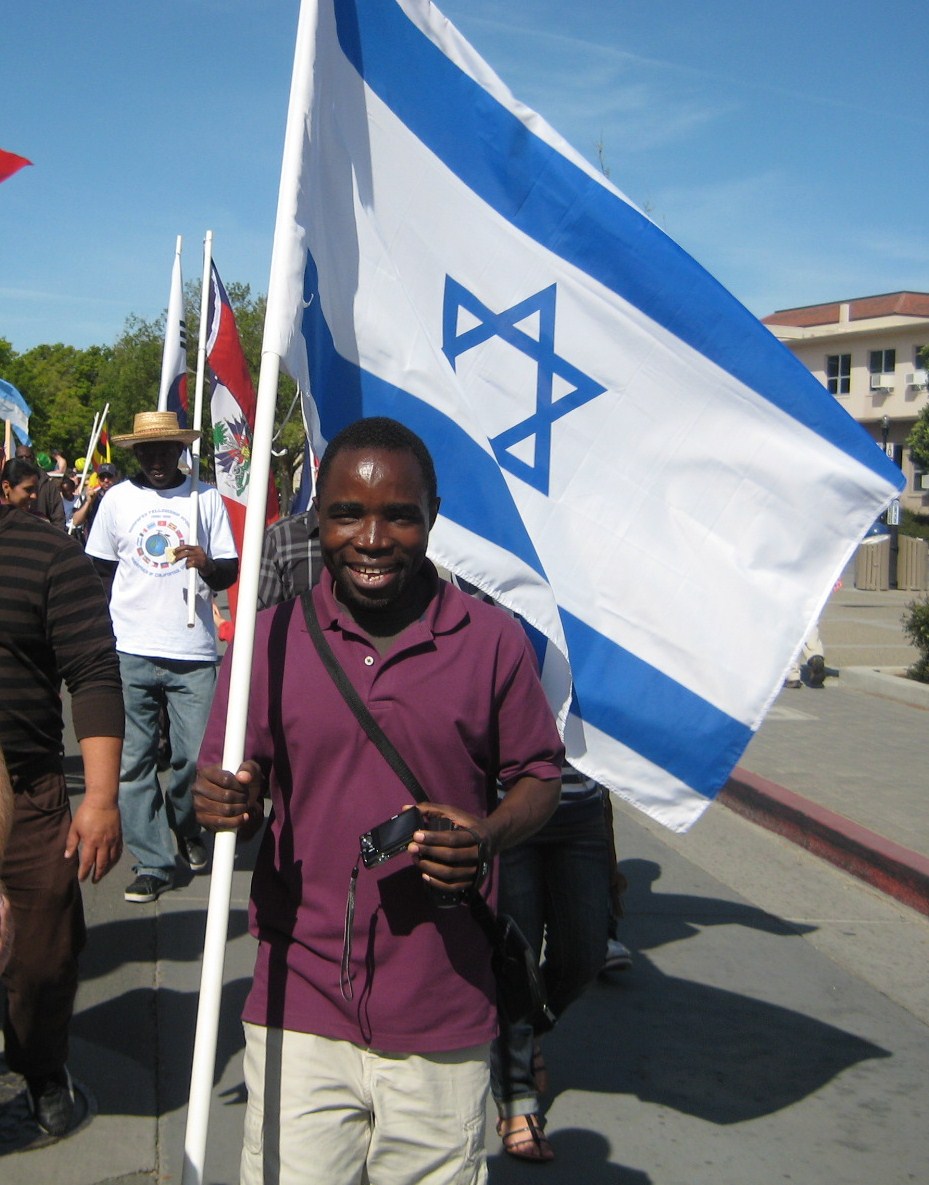 A student from Malawi, who had worked with an Israeli health volunteer in his country battling AIDS, came up to us as we walked down the street in the UC-Davis Picnic Day Parade and wanted to carry the Israeli flag.
A student from Malawi, who had worked with an Israeli health volunteer in his country battling AIDS, came up to us as we walked down the street in the UC-Davis Picnic Day Parade and wanted to carry the Israeli flag.